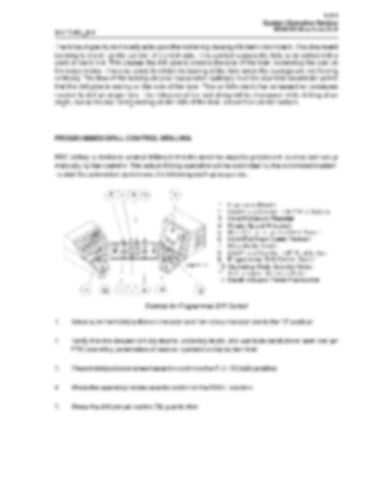1-111 System Operation Section MD6750 Blasthole Drill
BI011043_EN
The force of gravity continually acts upon the tool string causing it to bend downward. This downward bending is known as the camber of the drill pipe. This camber causes the hole to be drilled with a gradual bend in it. This causes the drill pipe to contact the side of the hole, increasing the load on the rotary motor. This also tends to inhibit the bailing of the hole since the cuttings are not flowing vertically. The flow of the bailing air (and suspended cuttings) must be diverted around the points that the drill pipe is resting on the side of the hole. This contributes to the increased air pressures needed to drill an angle hole. The vibration of the tool string will be increased while drilling at an angle, due to the tool string resting on the side of the hole, rather than on the bottom.
PROGRAMMED DRILL CONTROL DRILLING PDC drilling is similar to normal drilling in that the machine must be positioned, leveled and set up manually by the operator. The actual drilling operation will be controlled by the automated system. To start the automated system use the following start-up sequence.
Controls for Programmed Drill Control
1.
Make sure the hoist/pulldown rheostat and the rotary rheostat are in the “0” position.
2.
Verify that the desired drilling depths, collaring depth, and wet hole depth have been set per PDC operating parameters screen on operator’s display terminal.
3.
Place hoist/pulldown speed selector switch in the PULLDOWN position.
4.
Place the operating mode selector switch in the DRILL position.
5.
Press the drill/propel control ON pushbutton.


